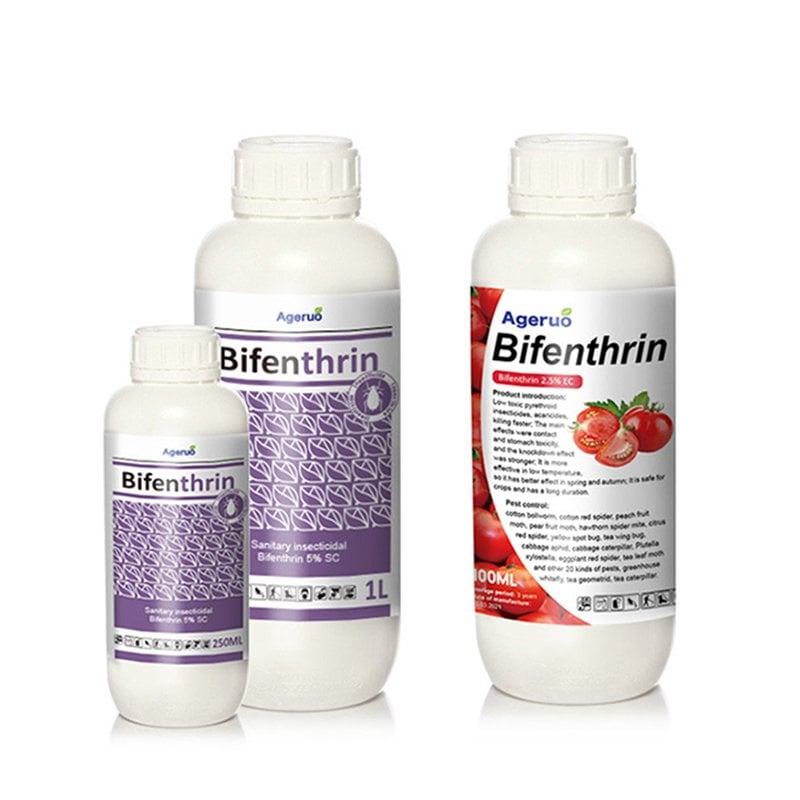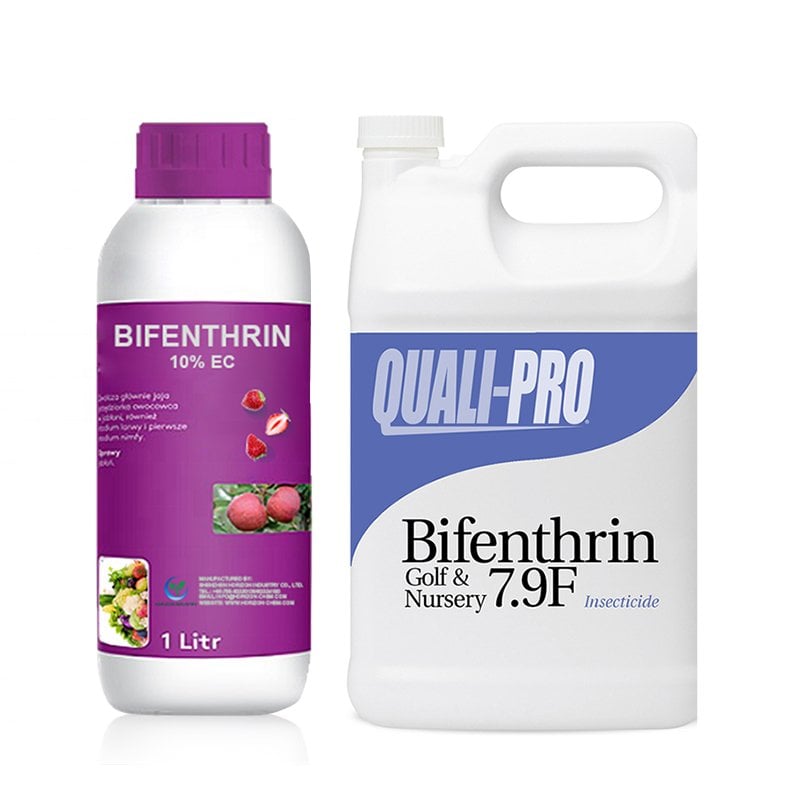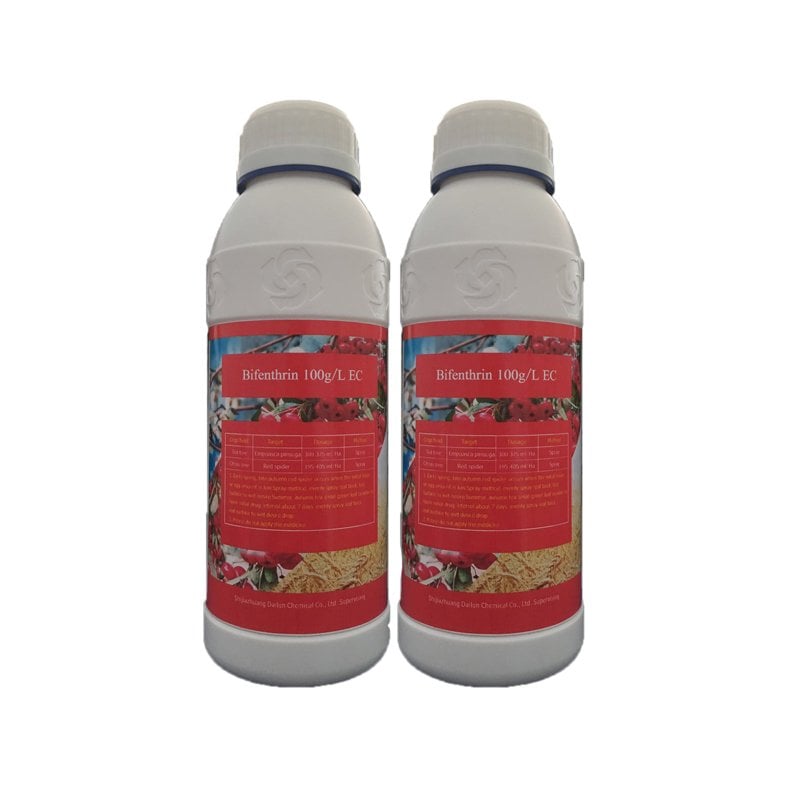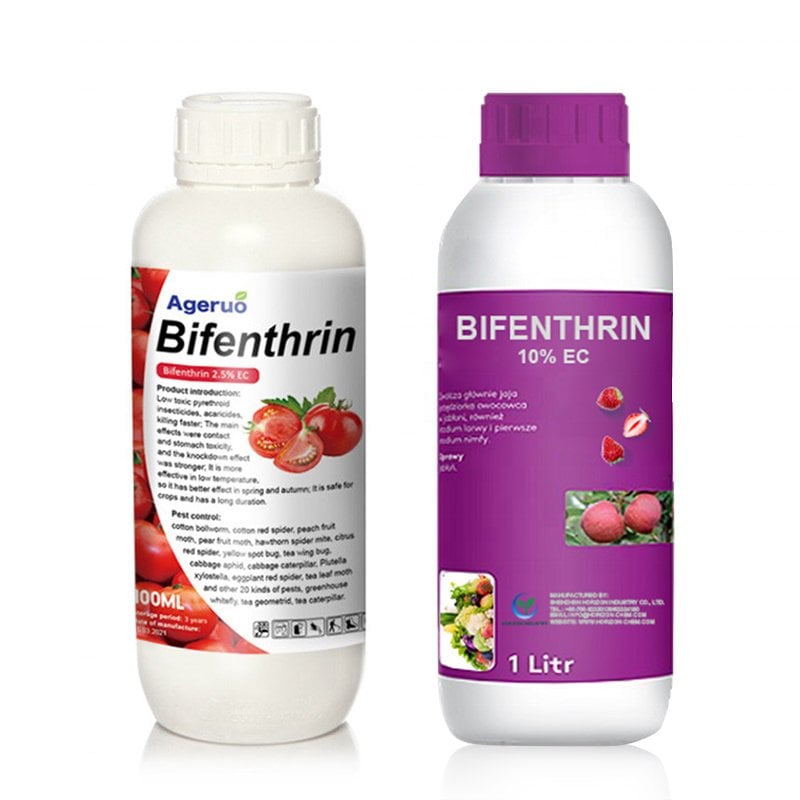Bifenthrin: Comprehensive Guide to Usage and Applications
Bifenthrin is a widely used synthetic pyrethroid insecticide known for its versatility in controlling a variety of pests. This article provides a detailed overview of its uses, effectiveness against different insects, and how it compares to other insecticides in pest control. We’ll explore its application in pest control, its role in agriculture, and how it works to eliminate various pests in both residential and commercial settings.
1. What is Bifenthrin?
Bifenthrin is a broad-spectrum insecticide that belongs to the pyrethroid family, a class of chemicals that affect the nervous system of insects. It is used to control a variety of pests, including mosquitoes, ants, cockroaches, fleas, termites, and more. Bifenthrin disrupts the nervous system of insects, causing paralysis and death, which is why it is effective against both insects and pests that are a threat to public health, agriculture, and property.
2. Bifenthrin Insect Control Uses
2.1 Mosquito Control (Bifenthrin for Mosquitoes)
Bifenthrin is commonly used to control mosquitoes, which are a vector for several diseases like malaria and dengue. In outdoor settings, such as gardens, lawns, and playgrounds, it helps reduce the population of adult mosquitoes and larvae.
- Application: Applied as a spray or fogging treatment, especially in vegetation and areas near water bodies where mosquitoes breed.
2.2 Pest Control (Bifenthrin for Pests)
Bifenthrin is effective in managing various household pests, including ants, fleas, cockroaches, and termites. It is widely used both indoors and outdoors to prevent and eliminate pest infestations.
- Application: Used as a barrier spray around foundations, in kitchens, bathrooms, and cracks where pests are commonly found.
2.3 Control for Ants (Bifenthrin for Ants)
Bifenthrin is particularly effective in controlling carpenter ants and fire ants, which can cause structural damage and be a nuisance in homes and commercial properties.
- Application: Applied around the exterior of buildings or directly on nests, commonly in perimeter treatments.
2.4 Bifenthrin for Fleas
Fleas are a common problem in homes with pets. Bifenthrin provides long-lasting control by targeting fleas and their larvae.
- Application: Applied to carpets, furniture, and pet bedding for both indoor and outdoor flea control.
2.5 Roach Control (Bifenthrin for Roaches)
Roaches are one of the most persistent pests in homes and commercial buildings. Bifenthrin is highly effective at eradicating cockroaches by affecting their nervous system.
- Application: Direct application to cracks, crevices, and sheltered areas where cockroaches hide.
2.6 Termite Control (Bifenthrin for Termites)
Termites are notorious for causing significant structural damage to homes and buildings. Bifenthrin is used as a preventive treatment in termite barriers.
- Application: Bifenthrin is applied to the soil around the foundation to create a protective barrier.
2.7 Bed Bug Control (Bifenthrin for Bed Bugs)
While bifenthrin can help in bed bug control, it is often used in conjunction with other treatments due to the insects’ resistance.
- Application: Applied directly to cracks and crevices where bed bugs hide, such as bed frames and mattresses.
3. Key Insects Targeted by Bifenthrin
Bifenthrin is effective against a variety of pests, particularly ants, roaches, mosquitoes, and termites. Below is an overview of the specific insects it controls:
- Ants: Carpenter ants, fire ants, pavement ants.
- Cockroaches: German roaches, American roaches, Oriental roaches.
- Fleas: Common household fleas.
- Termites: Subterranean and drywood termites.
- Mosquitoes: Adult mosquitoes and larvae.
- Bed Bugs: Primarily for localized infestations.
4. Application Concentration and Effectiveness
Bifenthrin is available in various concentrations depending on its intended use. For agricultural purposes, a higher concentration may be required, while for residential use, a diluted solution is often preferred for safety reasons.
- Agricultural Use: Typically used in concentrations of 0.1% to 0.5% for large-scale pest management on crops.
- Residential Use: Concentrations of 0.05% to 0.1% are standard for perimeter treatments or indoor pest control.
In both cases, the product is applied either as a spray or granules based on the targeted pest.
5. Bifenthrin Application Guide
| Application Area | Common Formulations | Recommended Dosage | Target Pests |
|---|---|---|---|
| Agricultural – Foliar Spray | 2% EC (Emulsifiable Concentrate) | 2.1 – 6.4 mL per 667 m² (per mu), diluted in water | Aphids, mites, leafrollers |
| Agricultural – Soil Treatment | 0.06% Solution | 0.8 mL per gallon of water, apply 500 mL per plant | Root maggots, soil insects |
| Lawn Treatment | 7.9% SC (Suspension Concentrate) | 14.8 – 29.6 mL per 93 m² (1000 ft²), diluted in water | Ants, fleas, ticks |
| Ornamental Plants | 7.9% SC | 5.4 – 43.5 mL per 378.5 L (100 gallons) of water | Whiteflies, aphids, mites |
| Indoor Pest Control (Crack & Crevice) | 7.9% SC | 14.8 – 29.6 mL per 3.78 L (1 gallon) of water | Cockroaches, ants, spiders |
| Termite Control (Soil Barrier Treatment) | 0.06% Solution | 0.8 mL per gallon; apply 15.1 L (4 gallons) per 3 m (10 ft) of trench length | Subterranean termites |
6. Alternatives to Bifenthrin for Pest Control
While bifenthrin is highly effective against many pests, there are other insecticides available for pest control:
- Permethrin: Another popular pyrethroid that works similarly to bifenthrin but is often used for treating lice, bed bugs, and mosquitoes.
- Deltamethrin: A potent pyrethroid used in agricultural and commercial pest control.
- Fipronil: Used for controlling termites, fleas, and ticks.
- Imidacloprid: A systemic insecticide commonly used for insect pest control in agriculture and home garden products.
Each of these alternatives has its strengths and can be chosen based on the type of pest and the environment where control is needed.
7. Safety and Considerations
While bifenthrin is an effective insecticide, it should be used with care:
- Bees: Bifenthrin can be harmful to bees, so applications should be avoided during pollination periods.
- Pets: If applying indoors, be sure to keep pets out of treated areas to avoid exposure.
- Humans: Wear protective gear when applying bifenthrin, and always follow the manufacturer’s instructions for safe use.
8. Conclusion
Bifenthrin is a versatile and powerful insecticide that provides effective control for a wide variety of pests, including ants, mosquitoes, termites, fleas, and more. Its ability to work in both residential and commercial settings makes it an essential tool for pest management.
At POMAIS, we offer bulk bifenthrin solutions tailored to meet your needs, whether for residential use or large-scale agricultural applications. We also provide custom formulations, packaging, and labeling to suit your specific requirements.
For more information on bifenthrin or to request a quote, contact us today. Our team is ready to assist with all your pest control needs!
Bifenthrin is a widely used synthetic pyrethroid insecticide known for its versatility in controlling a variety of pests. This article provides a detailed overview of its uses, effectiveness against different insects, and how it compares to other insecticides in pest control. We’ll explore its application in pest control, its role in agriculture, and how it works to eliminate various pests in both residential and commercial settings.
1. What is Bifenthrin?
Bifenthrin is a broad-spectrum insecticide that belongs to the pyrethroid family, a class of chemicals that affect the nervous system of insects. It is used to control a variety of pests, including mosquitoes, ants, cockroaches, fleas, termites, and more. Bifenthrin disrupts the nervous system of insects, causing paralysis and death, which is why it is effective against both insects and pests that are a threat to public health, agriculture, and property.
2. Bifenthrin Insect Control Uses
2.1 Mosquito Control (Bifenthrin for Mosquitoes)
Bifenthrin is commonly used to control mosquitoes, which are a vector for several diseases like malaria and dengue. In outdoor settings, such as gardens, lawns, and playgrounds, it helps reduce the population of adult mosquitoes and larvae.
- Application: Applied as a spray or fogging treatment, especially in vegetation and areas near water bodies where mosquitoes breed.
2.2 Pest Control (Bifenthrin for Pests)
Bifenthrin is effective in managing various household pests, including ants, fleas, cockroaches, and termites. It is widely used both indoors and outdoors to prevent and eliminate pest infestations.
- Application: Used as a barrier spray around foundations, in kitchens, bathrooms, and cracks where pests are commonly found.
2.3 Control for Ants (Bifenthrin for Ants)
Bifenthrin is particularly effective in controlling carpenter ants and fire ants, which can cause structural damage and be a nuisance in homes and commercial properties.
- Application: Applied around the exterior of buildings or directly on nests, commonly in perimeter treatments.
2.4 Bifenthrin for Fleas
Fleas are a common problem in homes with pets. Bifenthrin provides long-lasting control by targeting fleas and their larvae.
- Application: Applied to carpets, furniture, and pet bedding for both indoor and outdoor flea control.
2.5 Roach Control (Bifenthrin for Roaches)
Roaches are one of the most persistent pests in homes and commercial buildings. Bifenthrin is highly effective at eradicating cockroaches by affecting their nervous system.
- Application: Direct application to cracks, crevices, and sheltered areas where cockroaches hide.
2.6 Termite Control (Bifenthrin for Termites)
Termites are notorious for causing significant structural damage to homes and buildings. Bifenthrin is used as a preventive treatment in termite barriers.
- Application: Bifenthrin is applied to the soil around the foundation to create a protective barrier.
2.7 Bed Bug Control (Bifenthrin for Bed Bugs)
While bifenthrin can help in bed bug control, it is often used in conjunction with other treatments due to the insects’ resistance.
- Application: Applied directly to cracks and crevices where bed bugs hide, such as bed frames and mattresses.
3. Key Insects Targeted by Bifenthrin
Bifenthrin is effective against a variety of pests, particularly ants, roaches, mosquitoes, and termites. Below is an overview of the specific insects it controls:
- Ants: Carpenter ants, fire ants, pavement ants.
- Cockroaches: German roaches, American roaches, Oriental roaches.
- Fleas: Common household fleas.
- Termites: Subterranean and drywood termites.
- Mosquitoes: Adult mosquitoes and larvae.
- Bed Bugs: Primarily for localized infestations.
4. Application Concentration and Effectiveness
Bifenthrin is available in various concentrations depending on its intended use. For agricultural purposes, a higher concentration may be required, while for residential use, a diluted solution is often preferred for safety reasons.
- Agricultural Use: Typically used in concentrations of 0.1% to 0.5% for large-scale pest management on crops.
- Residential Use: Concentrations of 0.05% to 0.1% are standard for perimeter treatments or indoor pest control.
In both cases, the product is applied either as a spray or granules based on the targeted pest.
5. Bifenthrin Application Guide
| Application Area | Common Formulations | Recommended Dosage | Target Pests |
|---|---|---|---|
| Agricultural – Foliar Spray | 2% EC (Emulsifiable Concentrate) | 2.1 – 6.4 mL per 667 m² (per mu), diluted in water | Aphids, mites, leafrollers |
| Agricultural – Soil Treatment | 0.06% Solution | 0.8 mL per gallon of water, apply 500 mL per plant | Root maggots, soil insects |
| Lawn Treatment | 7.9% SC (Suspension Concentrate) | 14.8 – 29.6 mL per 93 m² (1000 ft²), diluted in water | Ants, fleas, ticks |
| Ornamental Plants | 7.9% SC | 5.4 – 43.5 mL per 378.5 L (100 gallons) of water | Whiteflies, aphids, mites |
| Indoor Pest Control (Crack & Crevice) | 7.9% SC | 14.8 – 29.6 mL per 3.78 L (1 gallon) of water | Cockroaches, ants, spiders |
| Termite Control (Soil Barrier Treatment) | 0.06% Solution | 0.8 mL per gallon; apply 15.1 L (4 gallons) per 3 m (10 ft) of trench length | Subterranean termites |
6. Alternatives to Bifenthrin for Pest Control
While bifenthrin is highly effective against many pests, there are other insecticides available for pest control:
- Permethrin: Another popular pyrethroid that works similarly to bifenthrin but is often used for treating lice, bed bugs, and mosquitoes.
- Deltamethrin: A potent pyrethroid used in agricultural and commercial pest control.
- Fipronil: Used for controlling termites, fleas, and ticks.
- Imidacloprid: A systemic insecticide commonly used for insect pest control in agriculture and home garden products.
Each of these alternatives has its strengths and can be chosen based on the type of pest and the environment where control is needed.
7. Safety and Considerations
While bifenthrin is an effective insecticide, it should be used with care:
- Bees: Bifenthrin can be harmful to bees, so applications should be avoided during pollination periods.
- Pets: If applying indoors, be sure to keep pets out of treated areas to avoid exposure.
- Humans: Wear protective gear when applying bifenthrin, and always follow the manufacturer’s instructions for safe use.
8. Conclusion
Bifenthrin is a versatile and powerful insecticide that provides effective control for a wide variety of pests, including ants, mosquitoes, termites, fleas, and more. Its ability to work in both residential and commercial settings makes it an essential tool for pest management.
At POMAIS, we offer bulk bifenthrin solutions tailored to meet your needs, whether for residential use or large-scale agricultural applications. We also provide custom formulations, packaging, and labeling to suit your specific requirements.
For more information on bifenthrin or to request a quote, contact us today. Our team is ready to assist with all your pest control needs!







